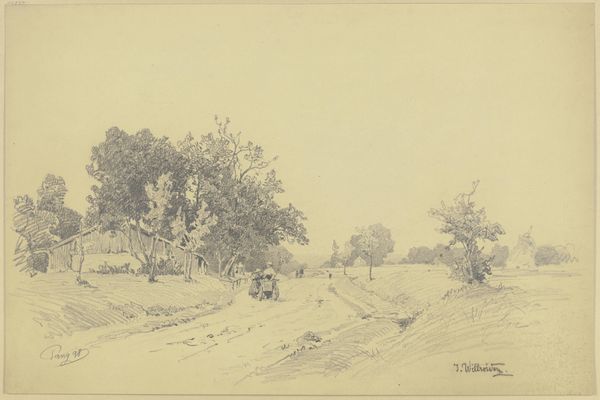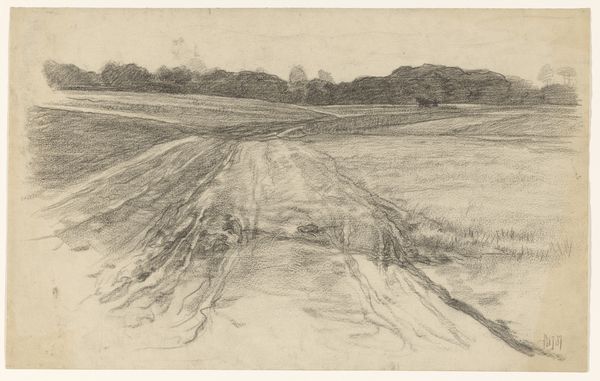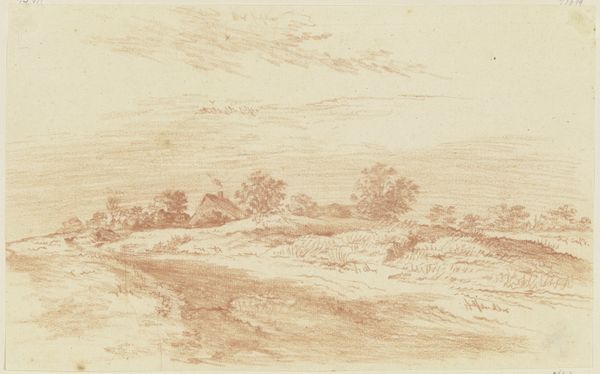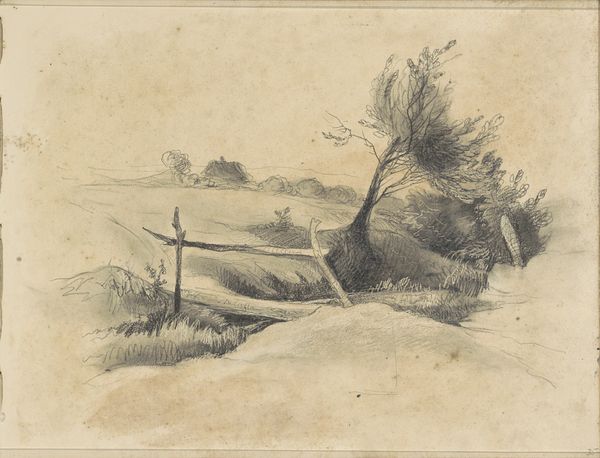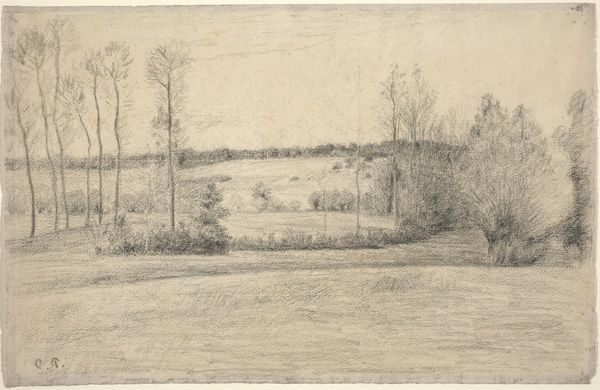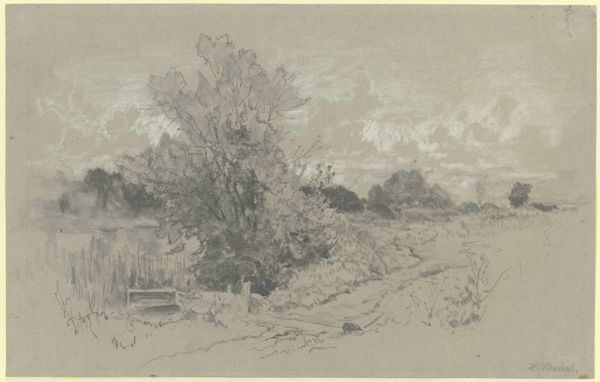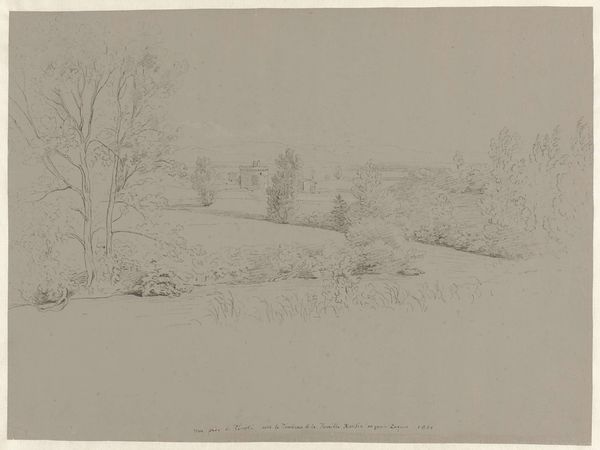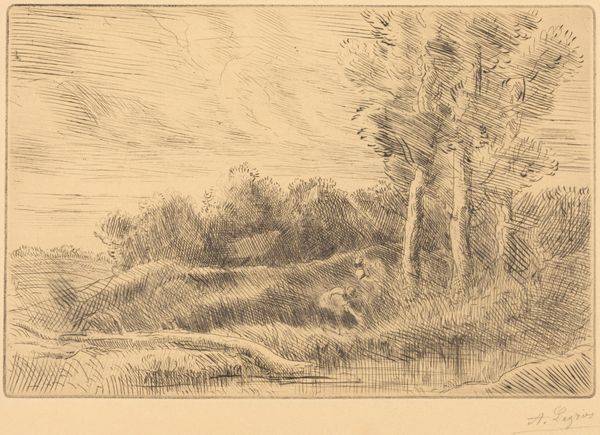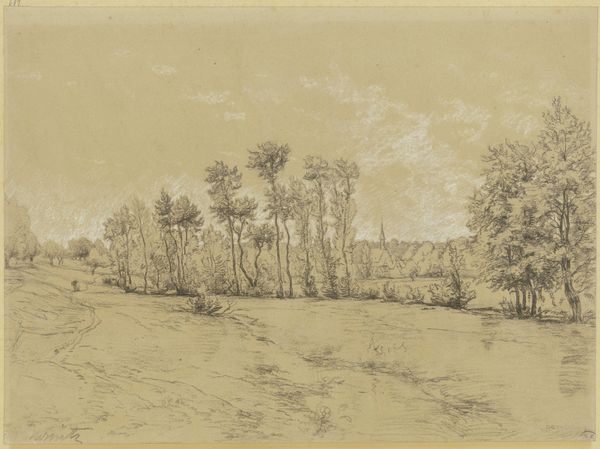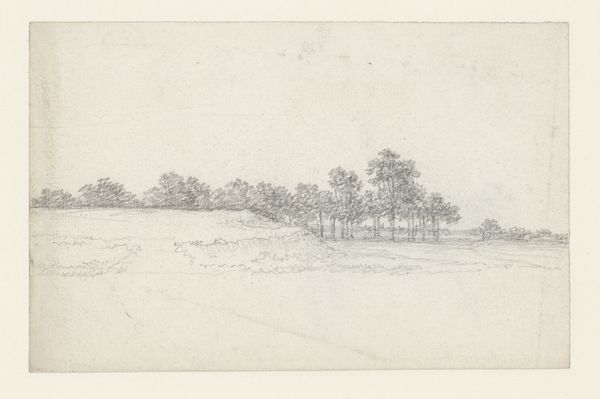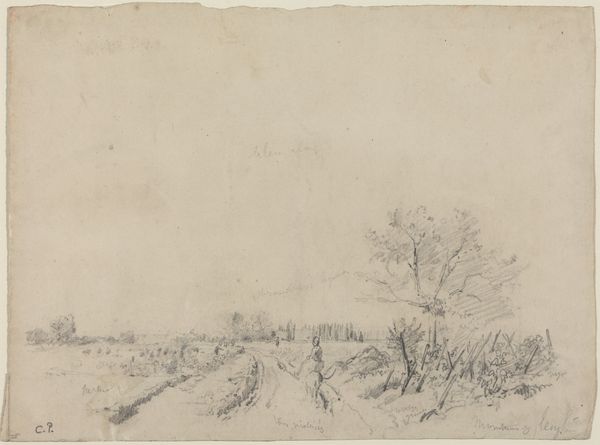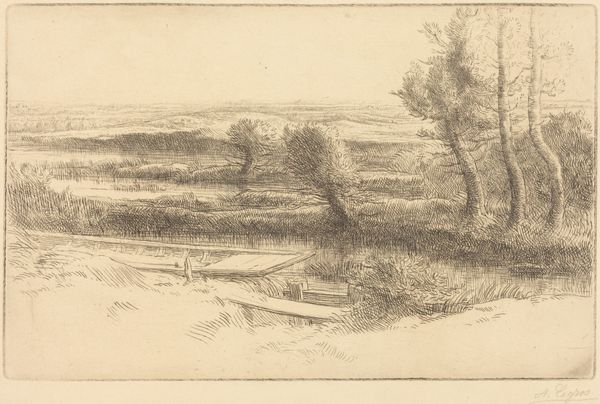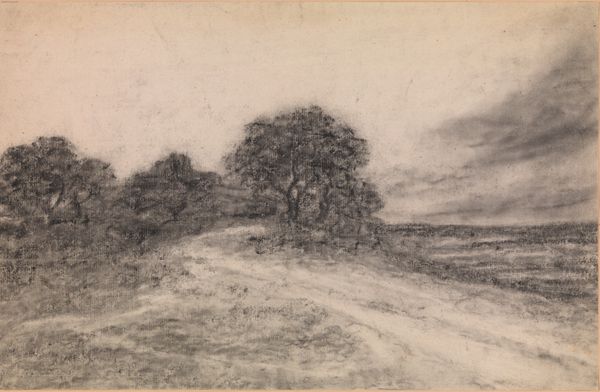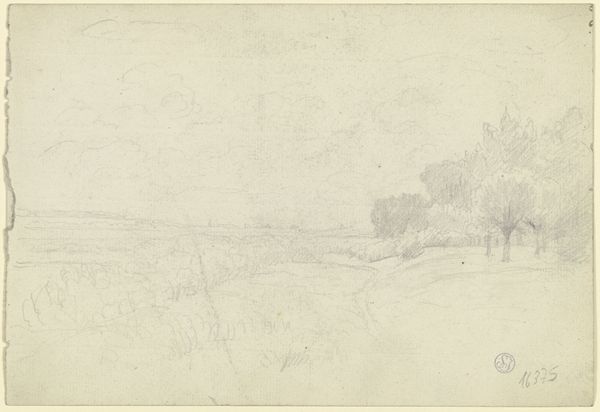
Copyright: Public Domain
Editor: Right now, we're looking at "Waldlandschaft bei Kronberg," a landscape drawing from 1867 by Otto Scholderer. The whole thing is rendered in delicate pencil on paper. It’s kind of understated; it has this gentle, almost hazy quality. What strikes you about it? Curator: That haze, as you call it, it's a really clever use of the pencil medium. It’s not just a landscape; it’s a feeling of a landscape. Think about the Romantics – their interest in nature wasn't just about documenting it, but about capturing an emotional experience. Do you sense any of that emotional resonance here? I mean, what does it *feel* like? Editor: Hmm, definitely peaceful, maybe even a little melancholic? There's something about the muted tones and the way the light sort of diffuses across the scene. The wispy pencil strokes lend a hazy ethereal feel. How much was Scholderer influenced by Romanticism? Curator: Heavily influenced! This was painted toward the end of the Romantic period, but its ideas permeated everything. Look at the composition: the solitary trees, the winding path inviting you into the unknown… all classic Romantic tropes, right? Editor: Absolutely! It's like the landscape itself is a character in a story. Did he do a lot of landscapes? Curator: He did a fair few. While later in his career he painted very distinct portraiture, the mood captured in his early landscapes often found a way to express his feelings. This drawing is almost like a whispered secret. A fleeting moment captured. Editor: I love that—a whispered secret. It’s making me rethink the whole piece now. I came in thinking "nice drawing," but now I see that he's imbuing nature with all these… human feelings. Curator: Exactly! Art isn't just what you see, it's what it makes you feel. And hopefully what you discover about yourself in the process of looking!
Comments
No comments
Be the first to comment and join the conversation on the ultimate creative platform.
